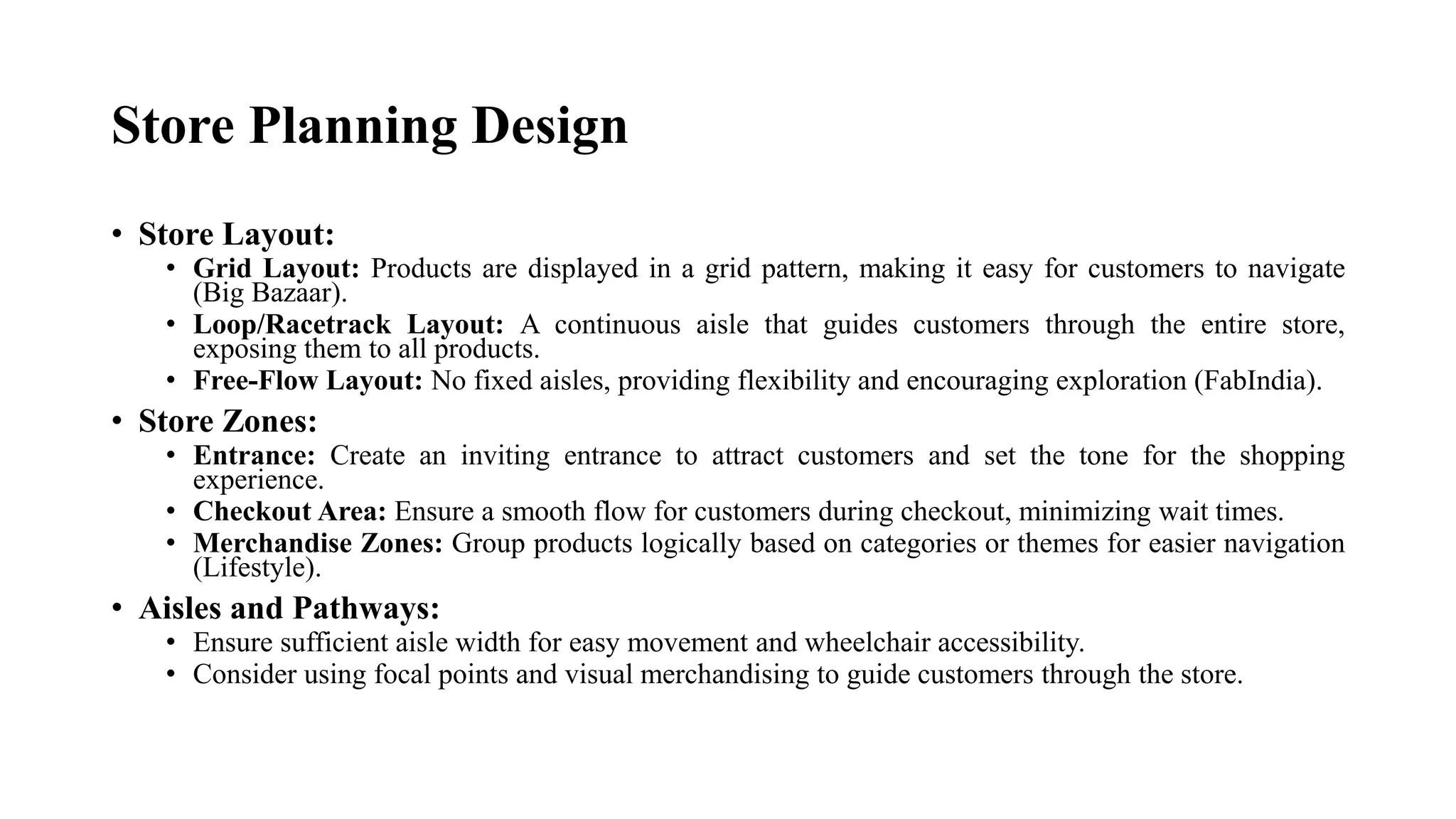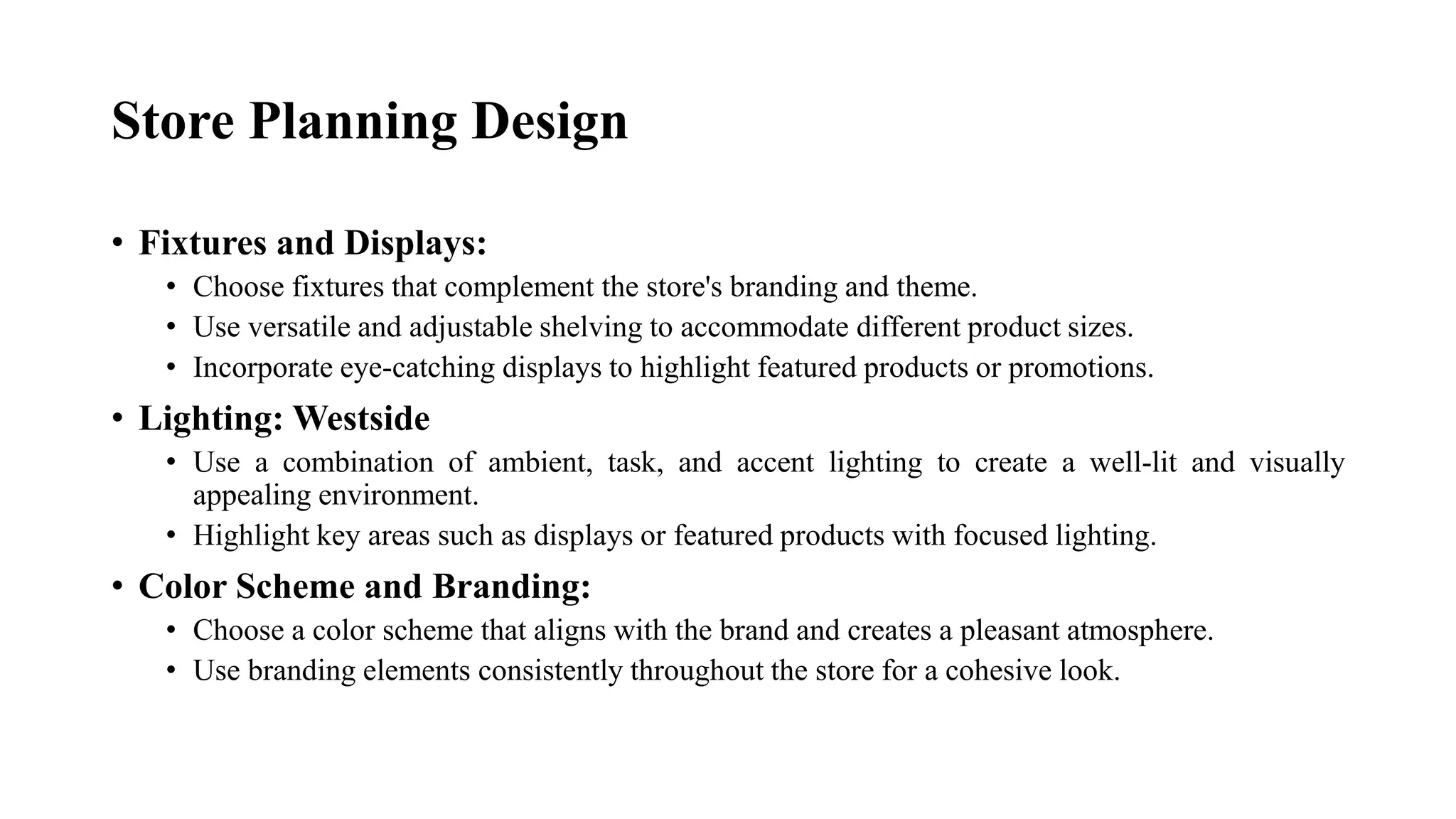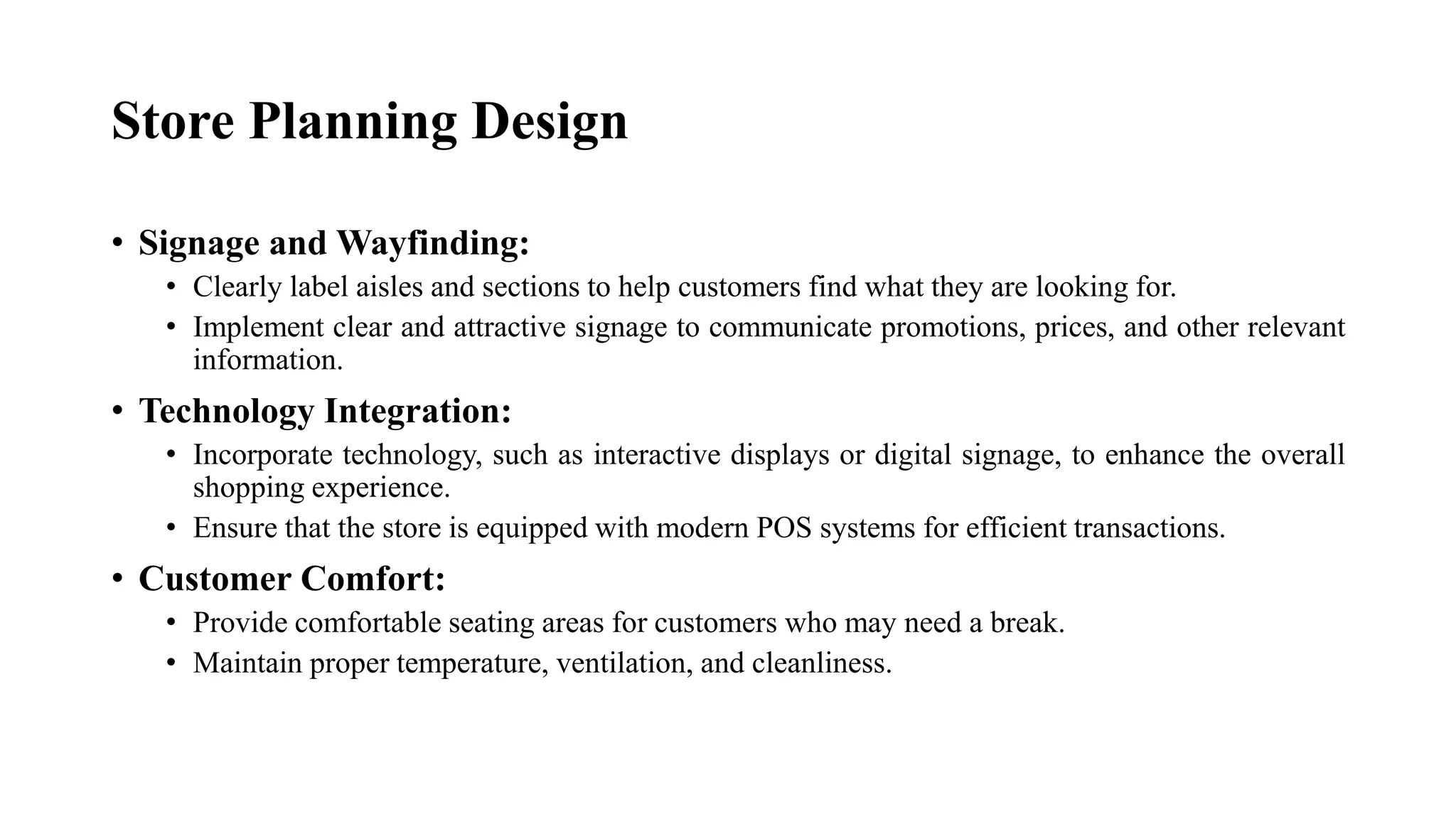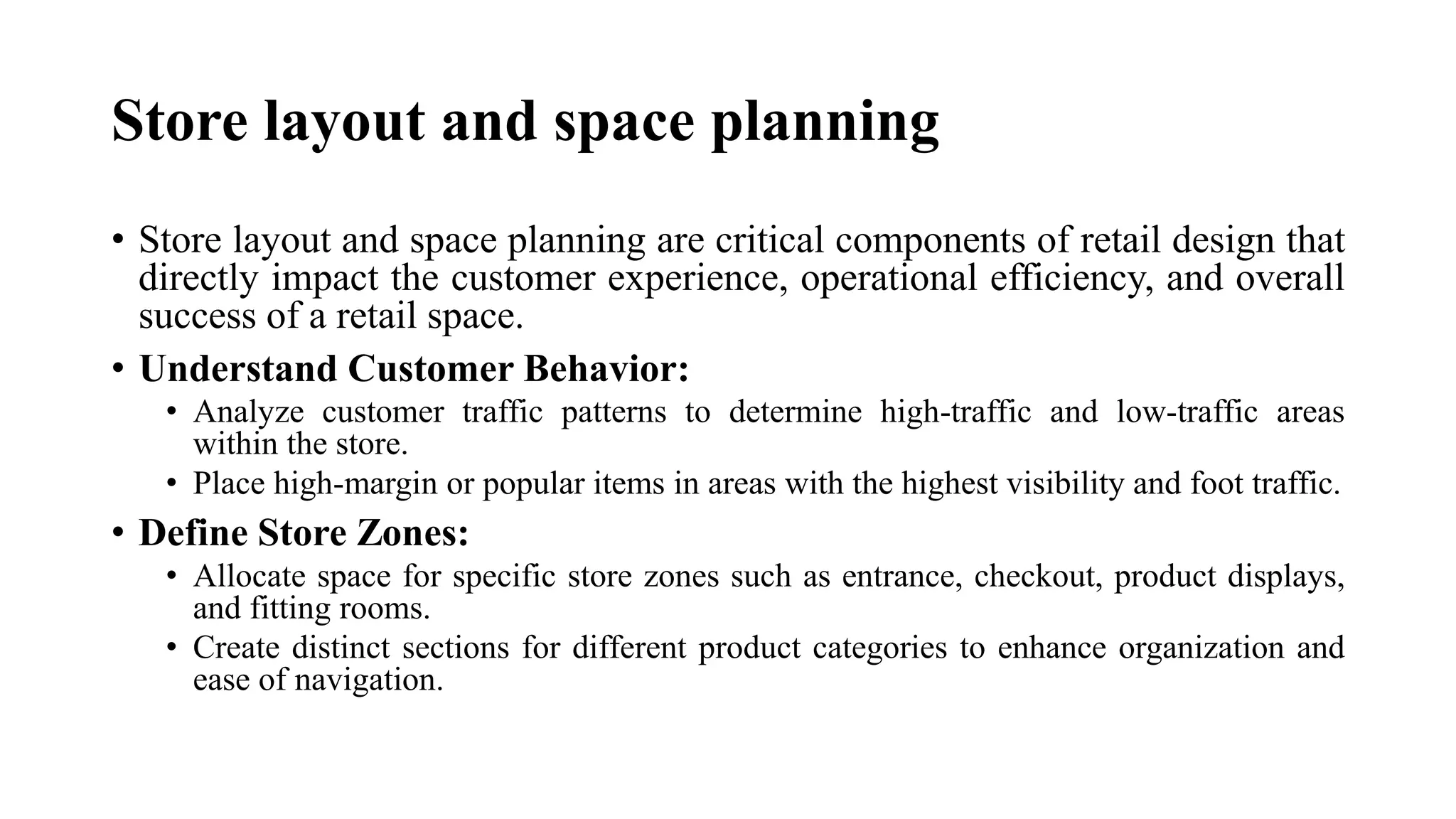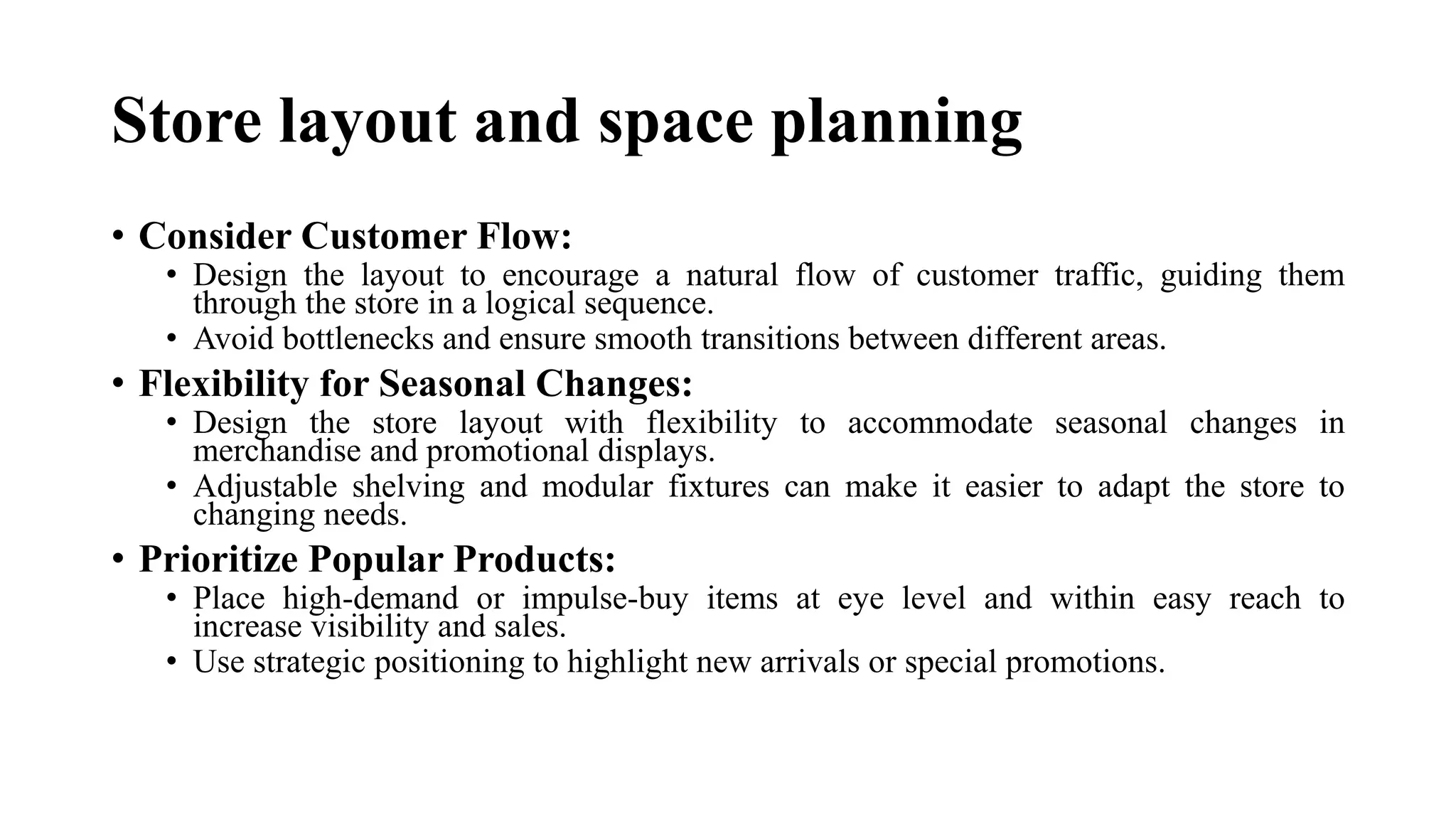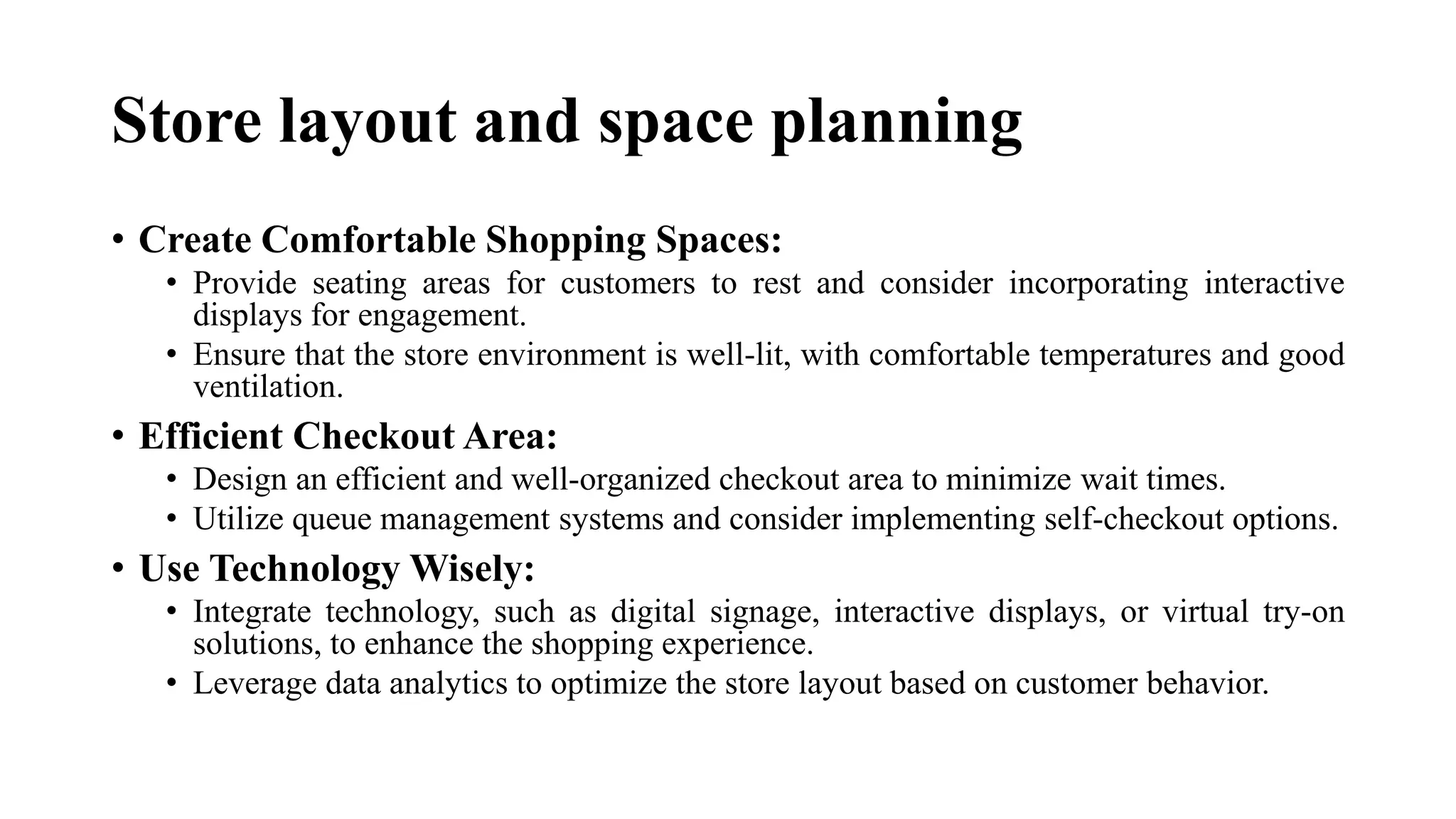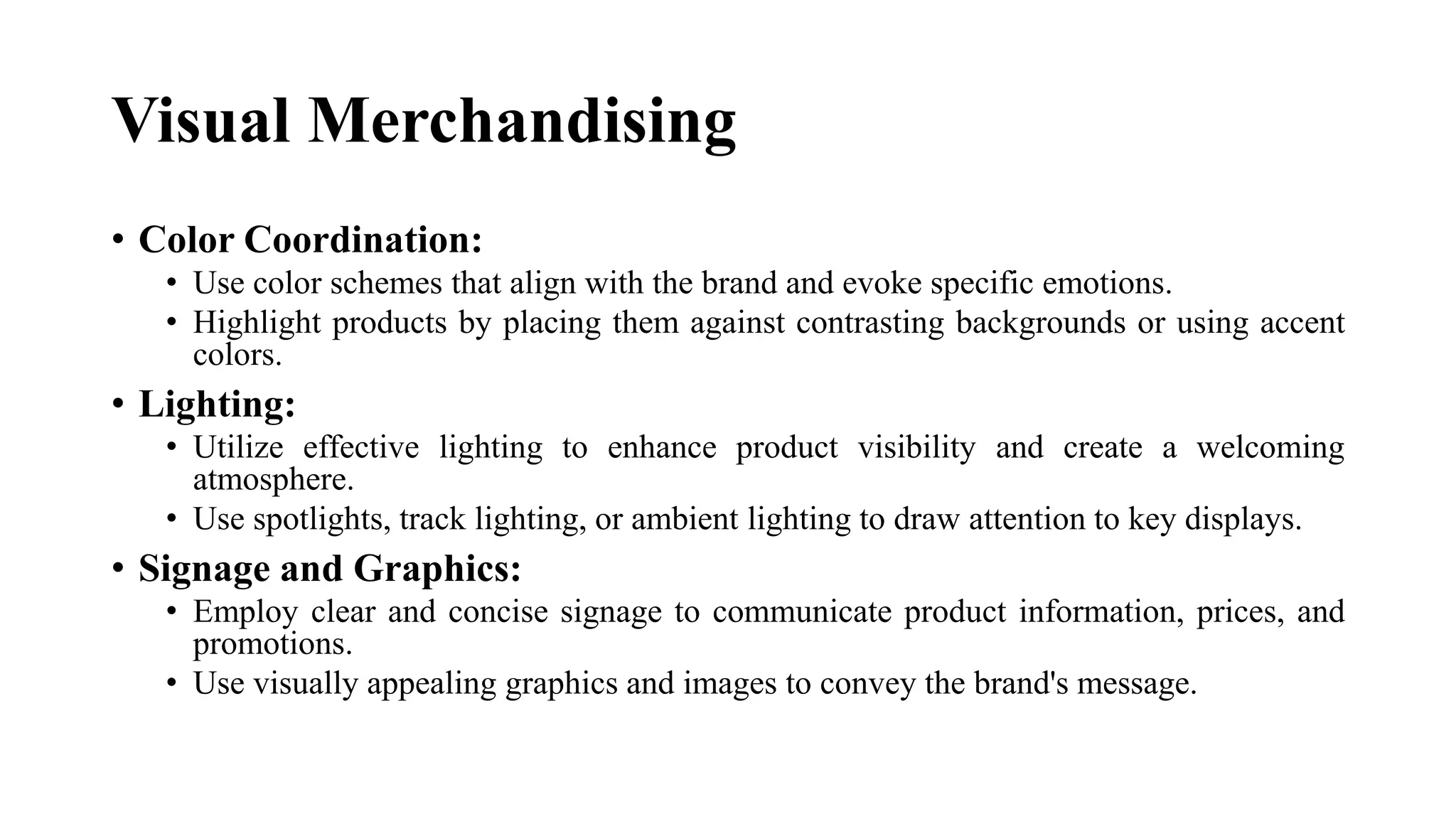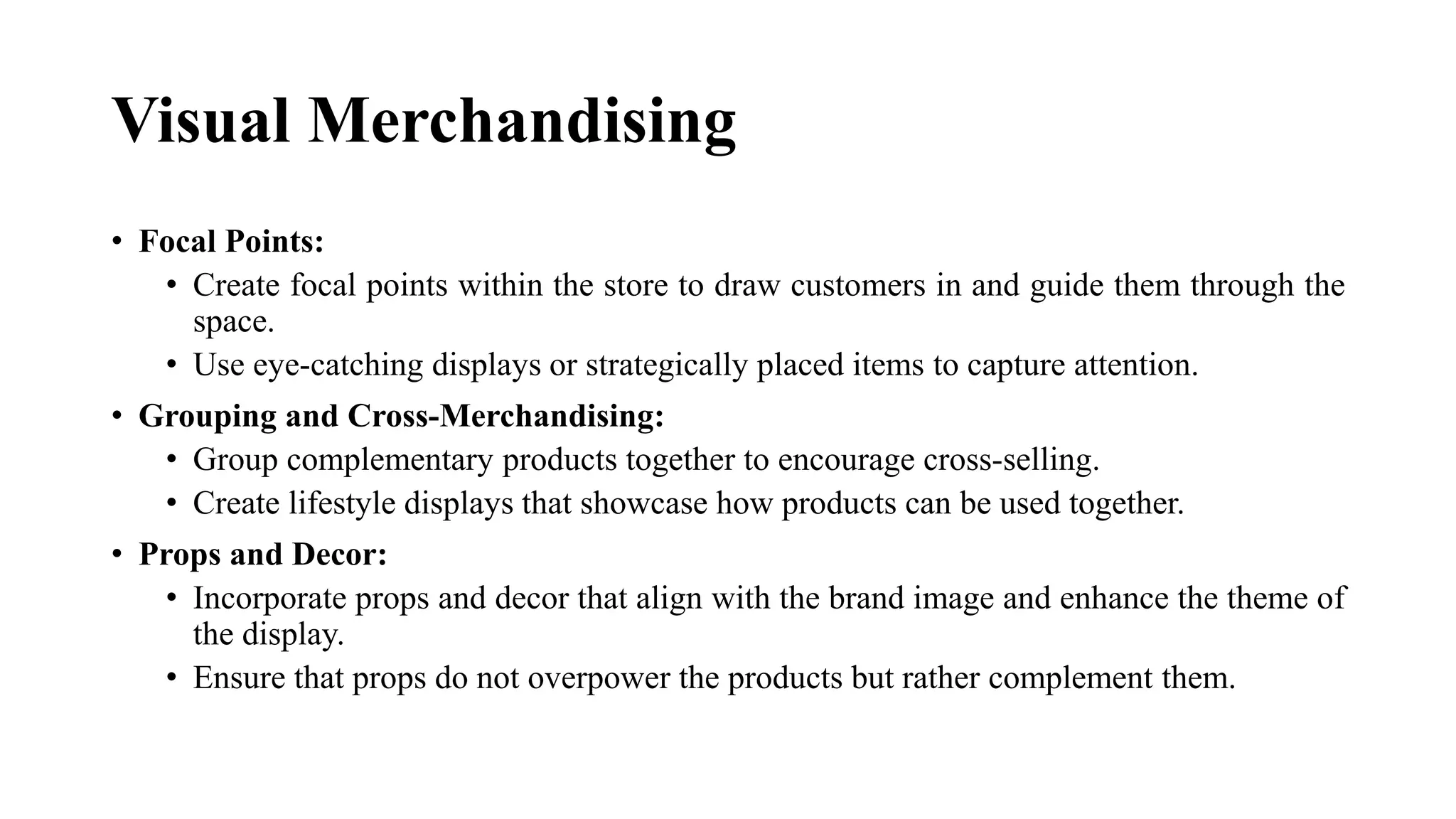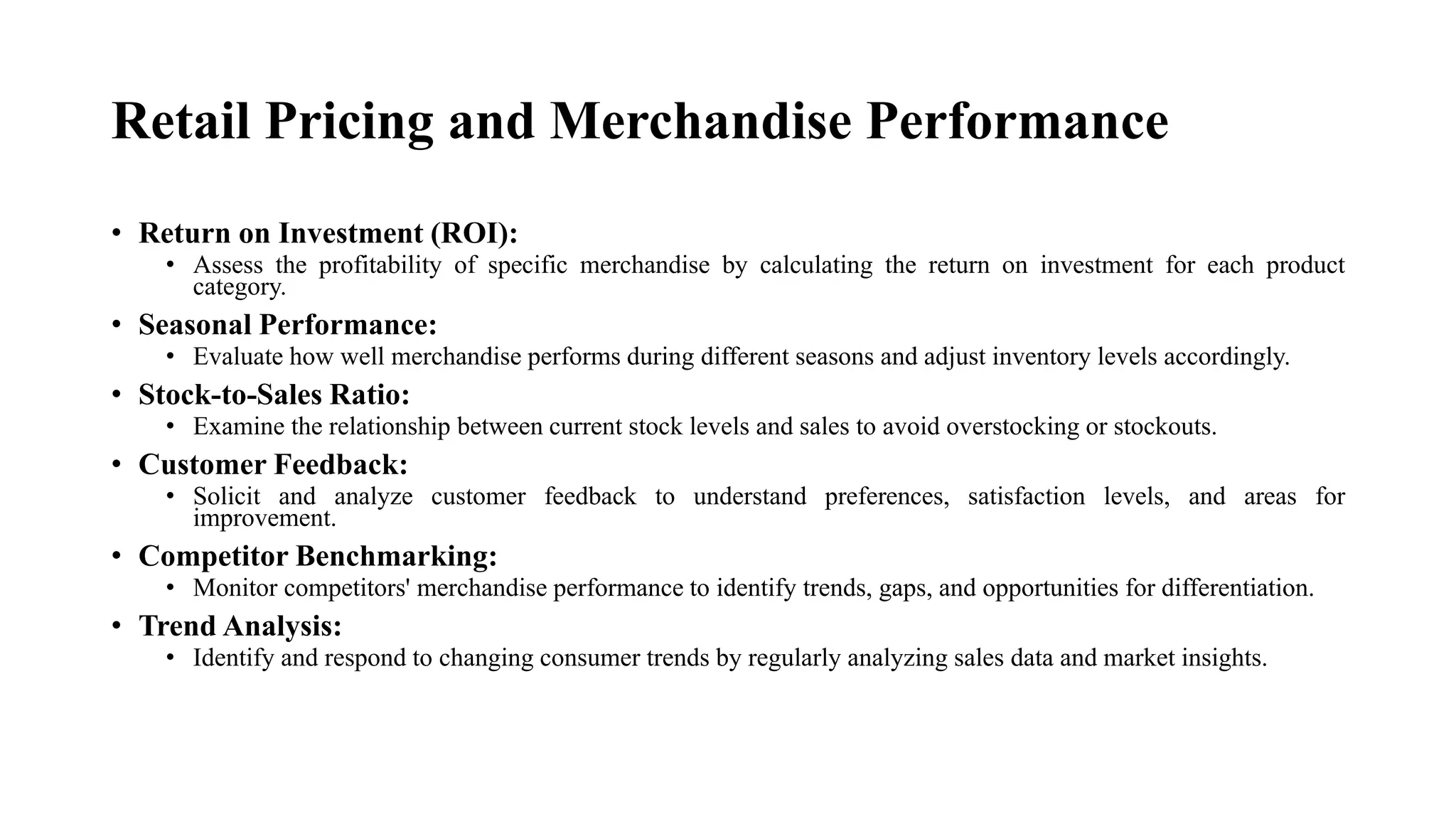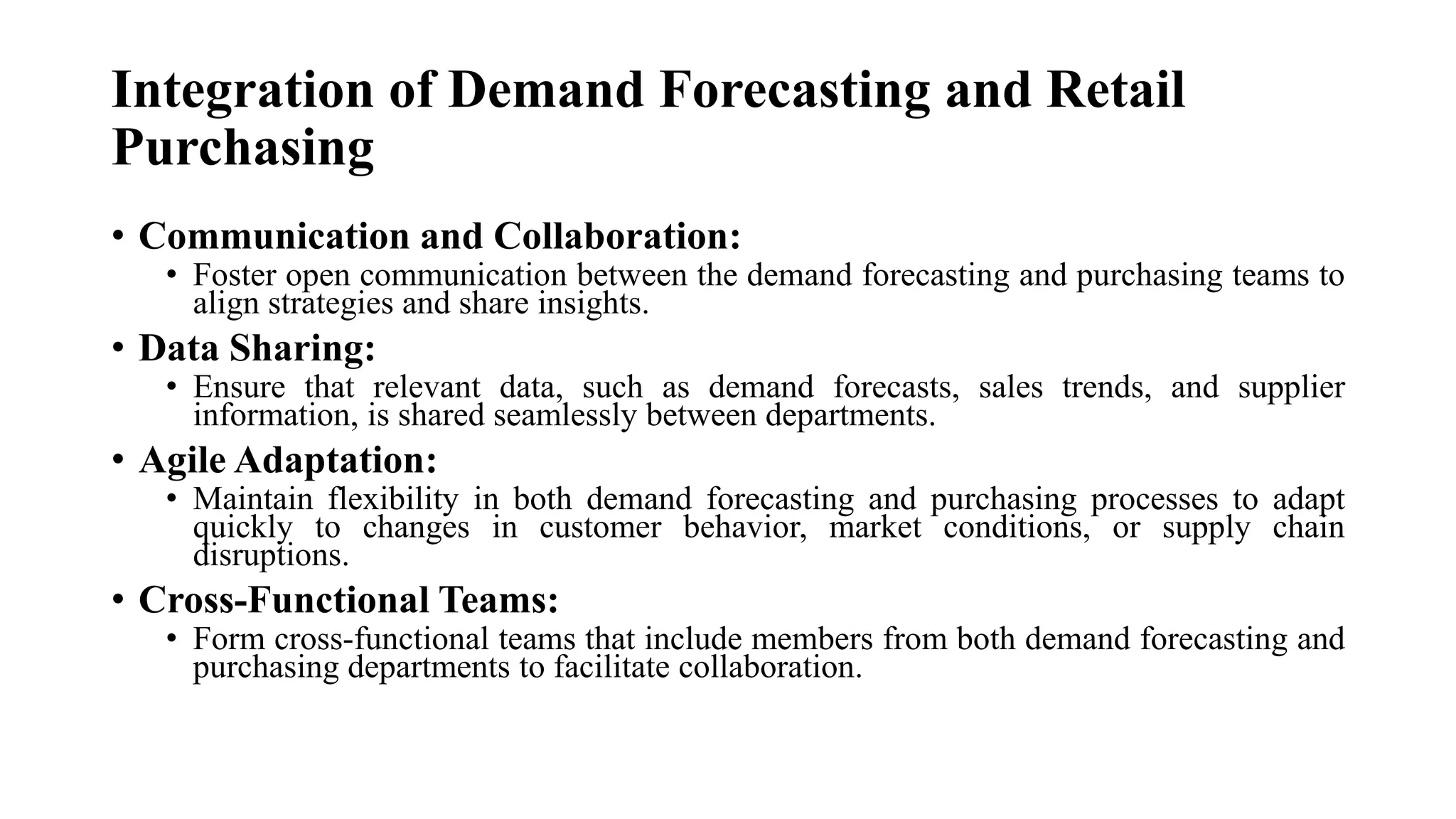The document covers the essential elements of store planning and design for retail spaces, focusing on optimizing layout and aesthetics to enhance customer experiences and maximize sales. It details various store layouts, visual merchandising strategies, and the significance of effective record-keeping, pricing strategies, and demand forecasting in retail operations. Overall, it emphasizes the importance of understanding customer behavior and integrating technology to adapt to evolving market trends.

